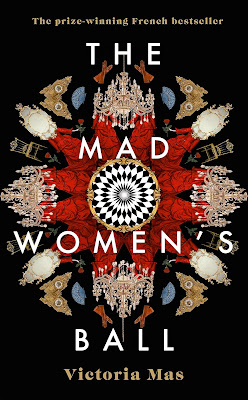Book #17
The Salpetriere Asylum: Paris, 1885. Dr. Charcot holds all of Paris in thrall with his displays of hypnotism on women who have been deemed mad and cast out from society. But the truth is much more complicated—these women are often simply inconvenient, unwanted wives, those who have lost something precious, wayward daughters, or girls born from adulterous relationships. For Parisian society, the highlight of the year is the Lenten ball—the Madwomen’s Ball—when the great and good come to gawk at the patients of the Salpetriere dressed up in their finery for one night only. For the women themselves, it is a rare moment of hope.
I’ll always be fascinated by the baffling reasons women were committed to asylums in the 19th century. Ranging from genuine mental illness all the way up to having ideas above your station, you could be thrown in there for any number of reasons. The main object, however, was usually that you were a public nuisance, or an embarrassment to your family, and had to be secreted away out of view.
Mas explores the women of the Salpêtrière asylum in 1885, many of whom are not mentally ill and simply an inconvenience to their families or the public. Their stories are heartbreaking, and we see how they are controlled within these walls. Their only shining light is looking forward to the annual ball, where aristocrats come to see them dressed up and dancing - a macabre form of entertainment for those with freedom, and a much scarce night of escape for the incarcerated.
The plight of these women is mixed in with that of the matron’s. Despite her power and commitment to the hospital, she is under the same level of control. She bows to the doctors, follows orders, and has her suggestions ignored, if not mocked. When she meets the newest inmate, Eugenie, who claims she can communicate with the dead, her world changes irrevocably.
Although Mas does wonderful things with evoking time and place, this seemed to be at the expense of other important explorations. Characterisation was quite lacking, and although she brings in some real historical characters, nothing is fleshed out properly to give us a rounded understanding. I would have especially liked much more on the doctor Jean-Martin Charcot and his use of hypnosis on patients, and also more on Allan Kardec and his research on Spiritism. For such an important and fascinating premise, everything felt very rushed, with nothing even beginning to break through the superficial.
So much more could have been done with this, but I did enjoy what I read. The mixture of true events and the supernatural was unsettling enough to be engaging, and Mas allowed me to truly feel for these women who had been shunned from society. Men were, and continue to be, shamelessly corrupt.

